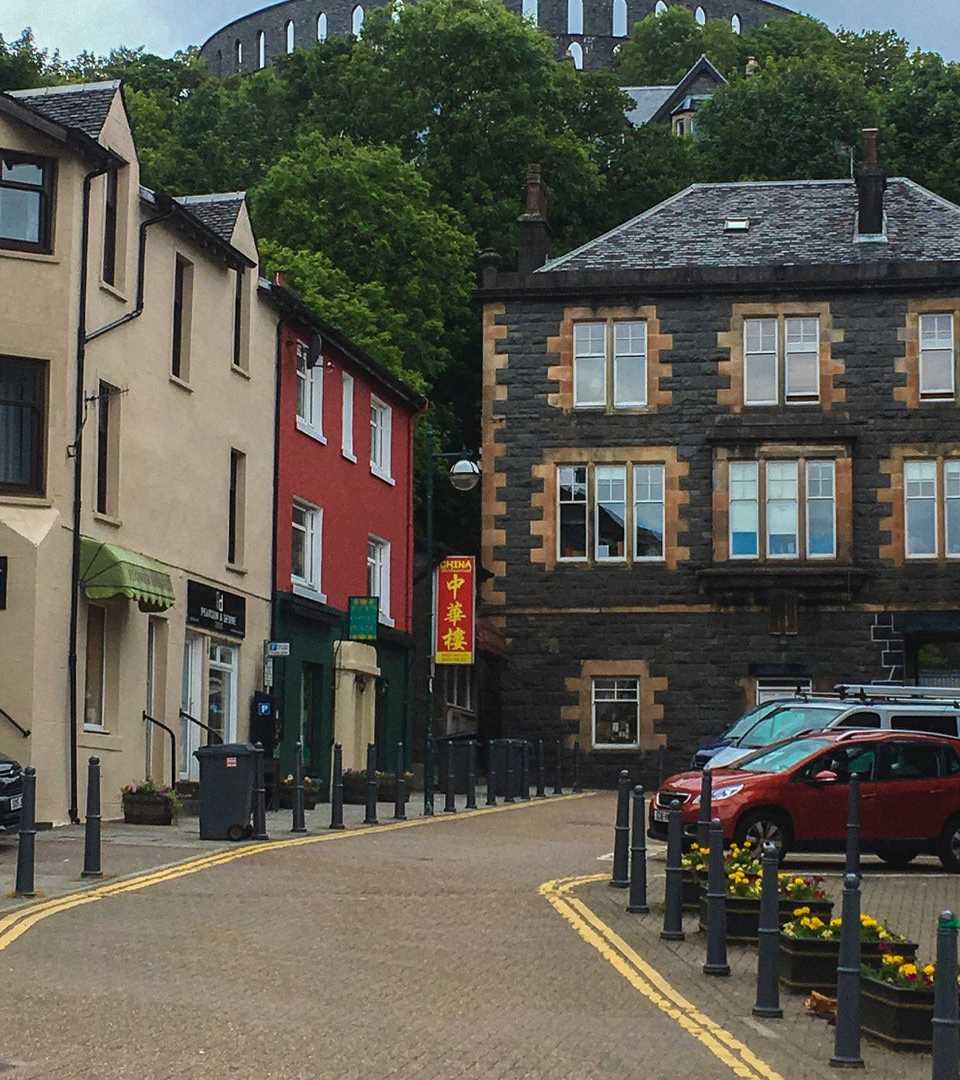A safe anchorage for yachts, a fishing harbour, a railway terminus (trains to Glasgow) and port of departure by ferry to islands in both the Inner and Outer Hebrides, Oban bustles as a commercial and administrative centre for Argyll, the land of the Gaels. A visit by Queen Victoria and the Prince Consort aboard the royal yacht Victoria and Albert in August 1847 launched modern tourism in the town which today markets itself as Scotland’s seafood capital. The town’s setting is spectacular, sheltered by the island of Kerrera with its conspicuous memorial to David Hutcheson who started ferry services from in the town with his brother-in-law David MacBrayne in 1851 a few years after Queen Victoria’s visit to the town. Guarding the entrance to the harbour is Dunollie Castle, ancestral seat of the MacDougalls. Overlooking the town is McCaig’s Tower, a vainglorious but spectacular folly commemorating the McCaig family and using up a considerable portion of the family fortune; the monument remains incomplete but affords remarkable views over the bay.
At the heart of the town is its historic whisky distillery, opened in 1794 by John Stevenson. Our day started with a tour of the distillery in which all the stages of whisky production were explained and the all-important final stage, consumption, was practised in the tasting room. We then had free time to explore the town’s attractions before sailing for our afternoon entrance to the Caledonian Canal through the Atlantic sea-lock at Corpach.
In Gaelic, Corpach means place of corpses for it lies at the south-western end of the Great Glen, a geological fault that cuts across Scotland and has for centuries been used as a prestigious coffin route. At Corpach the bodies of deceased royalty, from Scotland and Norway, were transferred for the final sea journey to Iona for burial, a sacred site for much of northern Europe in the mediaeval period. Corpach was the point of departure for an eager group of kayakers who spent an enjoyable afternoon exploring the coast under the shadow of Ben Nevis, the highest mountain on the British mainland. Another group took a short coach ride to Glenfinnan, where ‘Bonnie’ Prince Charlie raised the Jacobite standard on the British mainland for the first time in 1745 before the rising that was to culminate in his defeat at Culloden a year later. This group divided into three on arrival. One group hiked down a mountain trail from Glenfinnan railway station to the visitor centre passing under the viaduct made famous in the film version of J. K Rowling’s Harry Potter books as the location for the Hogwarts Express. A second group took a nature walk along a board walk and a third group went on a photography walk in the direction of the ‘Bonnie’ Prince Charlie Monument and Loch Shiel.









